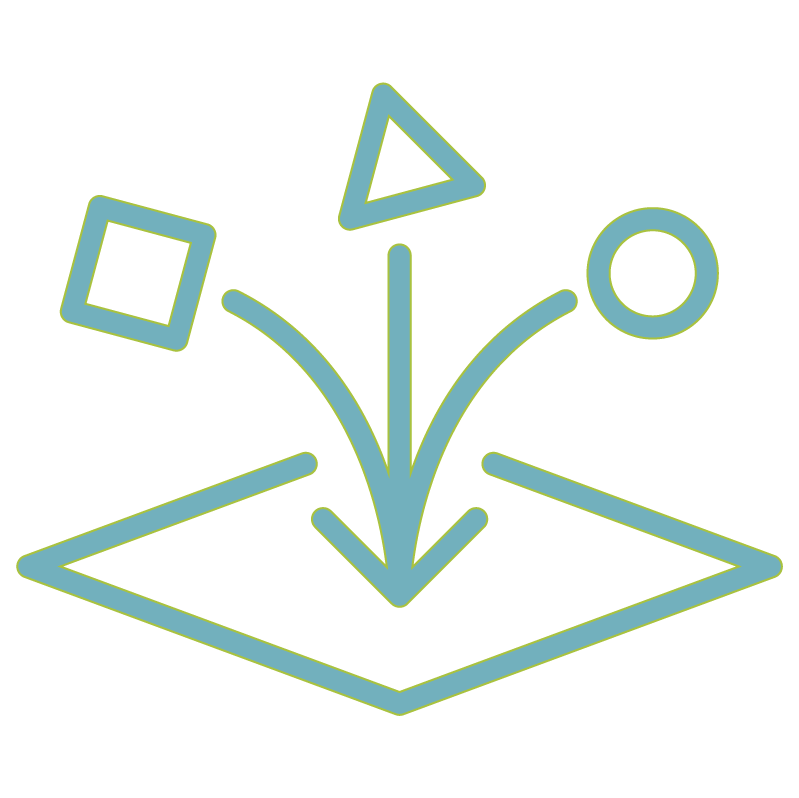Seamlessly integrate applications, data and APIs thanks to powerful API management of the scalable MuleSoft Anypoint platform.
MuleSoft
the middleware for your future.




MuleSoft Anypoint
MuleSoft offers a cloud-based API management and integration platform as an Integration Platform as a Service (iPaaS). It enables companies to connect systems across all channels - quickly, securely and scalably. With over 7.5 billion daily transactions and ready-made connectors, MuleSoft offers everything you need for seamless integrations.

Create APIs quickly

Increase program efficiency

Security

Mulesoft Anypoint Plattform

The Anypoint Platform enables data such as contacts, accounts or products to be updated just in time. Integration templates automatically ensure the consistency of data records.
With the Platform you can
- create APIs quickly and efficiently. An IDE is available for this purpose, which can significantly increase programming efficiency with many prefabricated modules for common integration tasks. significantly increase programming efficiency
- Deploy a created application in almost any environment.
- Secure APIs and data. Pre-built and integrated security checks reduce development effort.
- Operate and manage created APIs. Application monitoring enables rapid intervention when problems arise.
- Discover a variety of pre-built APIs to drive custom development.

Anypoint Design Center is responsible for the development of programming interfaces and the incorporation of integration flows. With a modern IDE, API and Flow Designer, the Design Center brings the necessary development tools to connect operational processes, implement integration processes and design APIs. Pre-built connectors, templates and tutorials provide proven solutions for diverse integration requirements and problems.
The Design Center is responsible for the development of programming interfaces and the inclusion of integration flows. It consists of the API Designer and the Flow Designer.
API Designer:
- helps to create code in any programming language
- enables RAML, OAS, AsyncAPI or GraphQL specifications
- facilitates work with intelligent solution suggestions
- provides ready-made building blocks for faster results
- automatically creates documentation
- includes a mocking function for quality checking
Flow Designer:
- enables integration via drag and drop
- offers small-step suggestions for optimizing the integration
- provides already used applications and connectors

Aspects of the Anypoint platform can be centrally monitored and managed from anywhere via a unified web interface - the Anypoint Management Center. Customizable dashboards provide visibility into operational status, traffic, integration processes, alerts, loggings, and more, facilitate troubleshooting and operational analysis.
Anypoint Monitoring:
- Dashboard with pre-built or user-created statistics containing various information about the applications
- allows setting alerts on a certain, individually defined behavior
- contains logging information
- aims at a shorter problem problem resolution time (through APM, logging and business metrics)
Anypoint Visualizer:
- enables the observation of all applications just in time
- gives an overview and thus speeds up troubleshooting
- offers partial views according to individual needs
- provides predefined or customized security policies and their compliance
- enables securing microservices
- provides insight into application performance

Through Anypoint Exchange, pre-built internal and external assets such as APIs, connectors and templates can be made available centrally to a dedicated user base.
Incorporating user feedback promotes reusability and consistency of assets, as well as increasing the speed of error source identification and efficiency. Furthermore, incorporating feedback and user evaluation provides the ability to quickly identify sources of errors and make assets more effective.

API-led connectivity is an approach that detaches data from its systems. Instead, they are connected to applications through reusable APIs so that the information is where you need it. After central assets are developed in the first step, they are later used as templates to program the specific applications needed. This is to avoid having to write the same code over and over again in different development stages.
The necessity of this strategic approach becomes clear when one realizes that the demands on a company's IT are continuously increasing. Not only does new content have to be implemented and integrated into the existing system, it also has to be regularly maintained and checked. A task that takes more time the more extensive the system becomes. For this reason, API-led connectivity is a way to permanently relieve your company's IT so that they can put their expertise to work for you as efficiently as possible. By using the MuleSoft Anypoint Platform, you get a tool that takes this approach and aims to maximize your IT's productivity.






.png)
.png)
